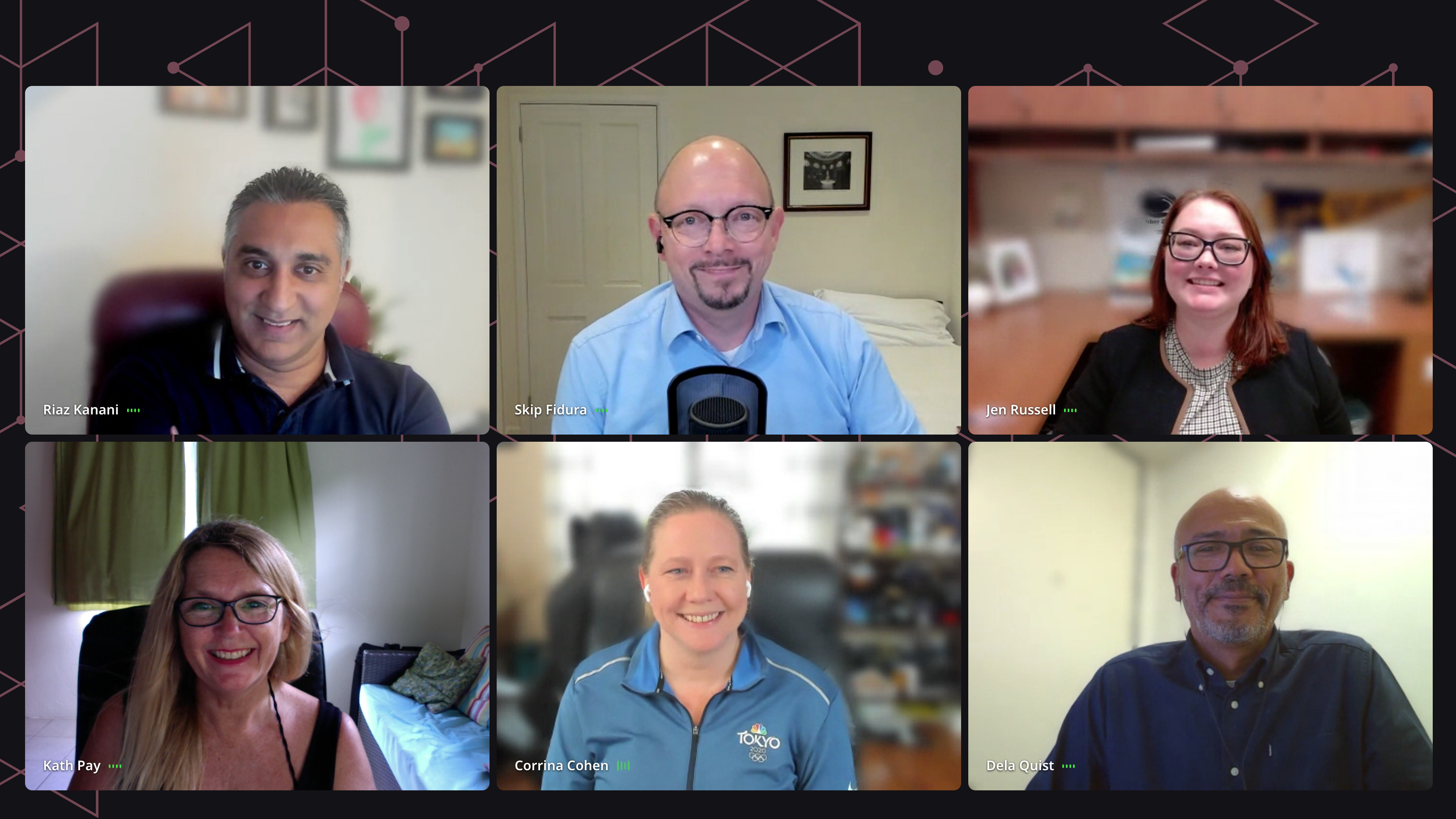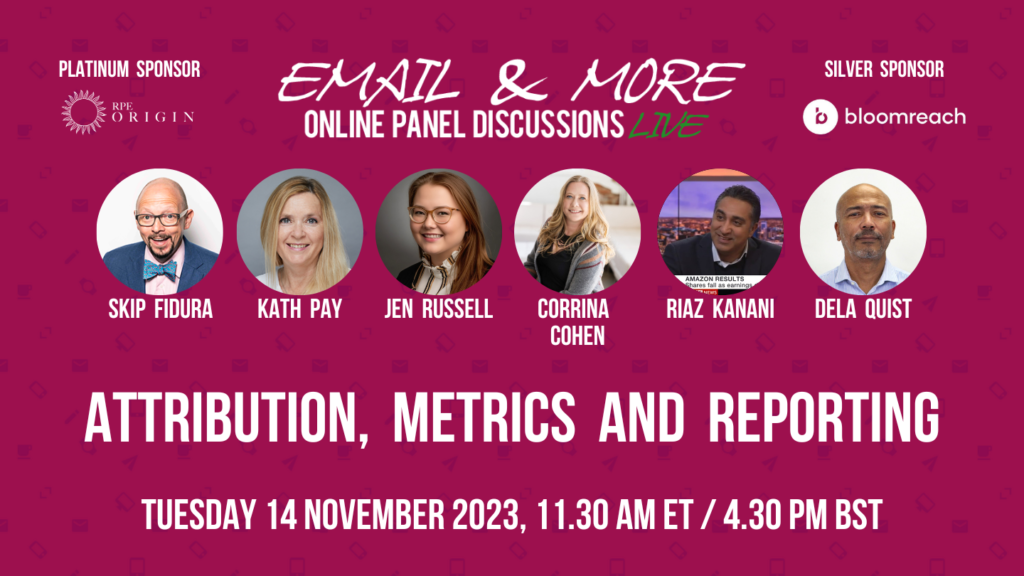Attribution, Metrics and Reporting
As the cynical say, you can prove anything with statistics and in the world of email marketing there’s no shortage of numbers to pick from. Emails sent, emails opened, click-throughs and more are all fastidiously reported by our platforms. But all those numbers are for nothing if we’re using them wrong. And there are few culprits more guilty of misuse and representation than that metric wolf in sheep’s clothing – the open rate.
These and other metrics as well as the reporting of and the attribution that recorded them were the topic of the final episode of 2023’s Email & More Season 4 – Holistic Email Marketing’s webinar series, bringing email marketers together with industry experts.
Joining moderator Skip Fidura and Holistic CEO Kath Pay, were a cast of veteran marketers including:
- Jen Russell (PSECU)
- Corrina Cohen (NBC Sports)
- Riaz Kanani (Radiate B2B)
- Dela Quist
Attribution and Reporting – Why You’re Not Getting Credit Where Credit is Due
Emails’ origins as the successor to the direct mailings of the last century was a revolution. Previously, marketers had very little idea of the direct success of their efforts. It wasn’t possible to count how many people had opened a letter and were moved to action in general. Suddenly however with email, it was possible to see all sorts of information about your emails and further internet technologies like cookies made it possible to track a conversion all the way back to that awesome 3% off deal that lured them in.
But times change as they always do. And like a faithful hound getting on in years it’s getting much harder to follow that trail. Some email providers like Apple have stopped allowing marketers to see email opens and now Google wants to take our cookies away. All of which is to say that getting direct attribution for our email efforts is becoming ever harder.
So, what should we do about it? “With new data privacy laws and the cookie list environment incoming, it’s going to be more critical that you understand your customer journey map” advises Jen Russell. “Without a direct line of progression, it’s going to become more important than ever to learn how to use the rest of your data to build the narrative to explain email’s role in the big picture in today’s marketing landscape.”
Elaborating further, Riaz Kanani colourfully described the “dark funnel”, a term to describe mysterious conversions that are being made when nobody quite knows why. For example, when customers share promotion emails with a friend who then goes on to buy something. The company can’t see this however, so just puts the sale down as coming out of thin air, even when it was an email at the start of the journey that made it happen.
One of the biggest challenges marketers face with attribution, however, is self-inflicted. Our easy access to metrics has led to the rise of many false assumptions. “Because we can see emails not being opened, we think it has no effect” explains Dela Quist, when in fact the mere presence of an email in a customer’s inbox helps to keep the company in the recipient’s mind.
Another source of difficulty for getting attribution for your contribution is with “long tail” emails and lack of reporting of them. This is a concept that Kath Pay helped to pioneer which concerns emails that drive sales but over a longer period and are often not reported on.
However, the business reality is sadly that, due to pressure to show results, many marketing departments are forced to provide premature reports on their successes. Customers who convert after the report is written are not counted as successes, meaning that email does not get the attribution it deserves. All of this adds up to a situation where email is working to unrealistic expectations to reach unobtainable metrics.
Great Expectations and How to Handle Them.
“I would say to any email marketer, never optimise for anything with the word rate in it” Dela advises when asked about how to fix the issue of misplaced expectations. Open rate is a key metric used by companies from the C-suite down to measure the impact of how email campaigns are performing. There’s just one problem – it doesn’t work very well.
“It’s really easy to get a very high open rate by sending only to the three most engaged people on your list once a year” He elaborated further. Though an extreme example, it’s easy to see how the system can be gamed and in the absence of a more holistic understanding of the company’s entire marketing strategy, the wrong approach may end up taken. Far better Dela says to take a metric like total opens and compare those month-on-month to see if your customers are responding more or less to what they’re sending.
Revealing the faults of the open rate is just one example that leads to misleading expectations. Another is that, since a customer can potentially be tracked all the way through their journey, some marketers and decision-makers start to think this can and should be done. In reality, Jen explains this rarely happens. The chain from initial email to final purchase crosses multiple technology platforms which don’t necessarily talk to each other, or at all.
This means that organisations need to think a bit more broadly about their results and attribute them to email. As Corrina says “You can insinuate that if a customer converted shortly after receiving a communication from any channel then that channel played a role in the conversion”. Just because somebody didn’t open the email doesn’t mean they didn’t later go to the website directly and click for example.
Final Words of Advice
Finally, to end not just the show but also the season, Skip invited the panel to give some final tips for the audience. These were:
- Make sure you’re not optimising metrics for metrics’ sake. You need to have an objective for why you use the metrics you do.
- Build business value into your metrics from the beginning as this will make it easier to report the value of what you do later. Everything you do needs to bring some value to justify doing it.
- Don’t neglect your long tail! It can take time for the real results of your actions to manifest themselves. If you have to present results early, be clear to your audience that you’re only presenting a preliminary report.
- And lastly… be the tiger and aggressively fight for your channel! It’s up to you to use the metrics and make the case for your success.
Thanks again to our panel guests and audience for their participation in our latest episode of Email and More! Watch the full panel, and others free and on demand.
A final thank you to the sponsors of this episode, platinum sponsor RPE Origin and silver sponsor Bloomreach for helping to make this series possible.




